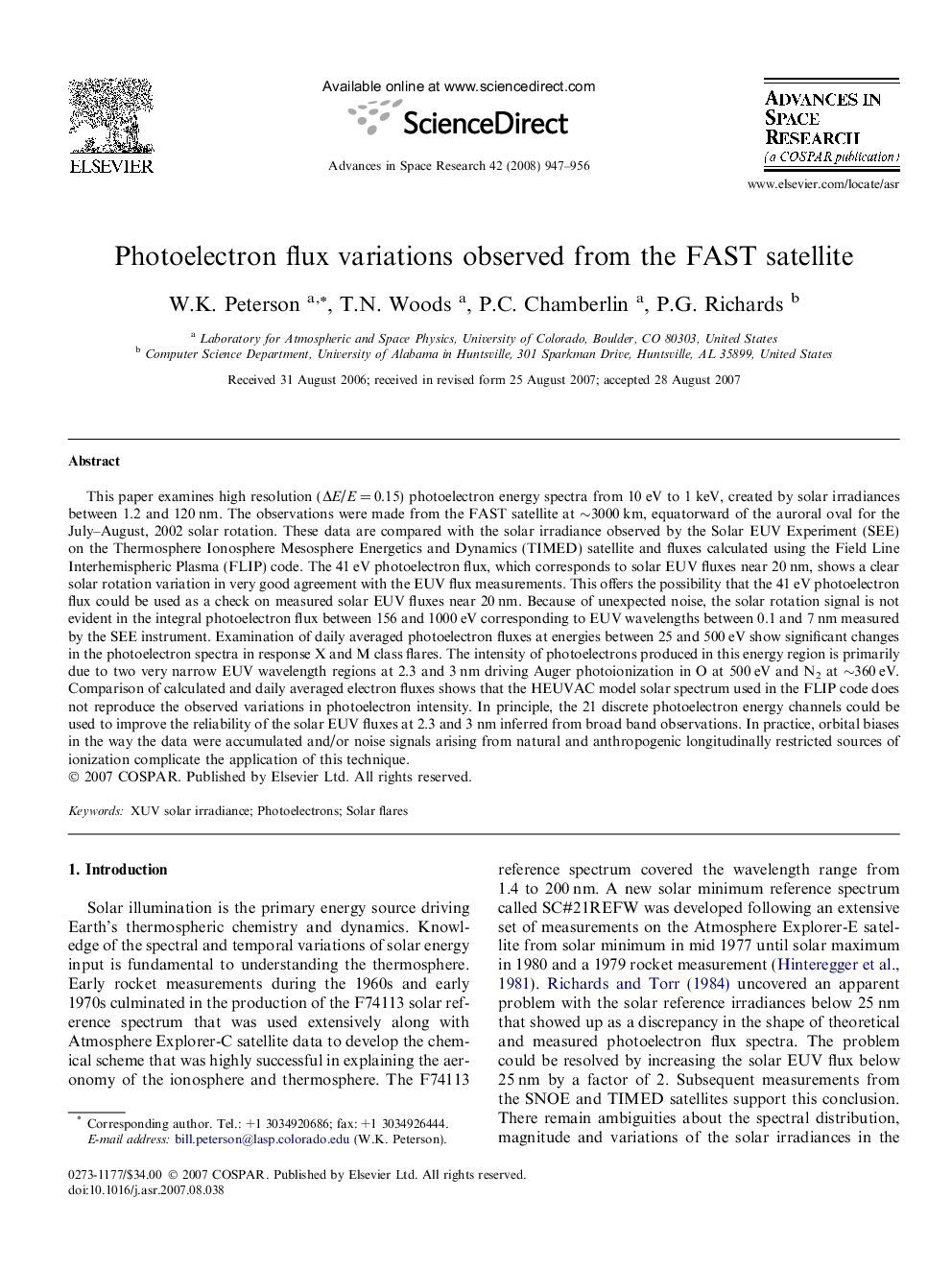| کد مقاله | کد نشریه | سال انتشار | مقاله انگلیسی | نسخه تمام متن |
|---|---|---|---|---|
| 1767655 | 1020199 | 2008 | 10 صفحه PDF | دانلود رایگان |

This paper examines high resolution (ΔE/E = 0.15) photoelectron energy spectra from 10 eV to 1 keV, created by solar irradiances between 1.2 and 120 nm. The observations were made from the FAST satellite at ∼3000 km, equatorward of the auroral oval for the July–August, 2002 solar rotation. These data are compared with the solar irradiance observed by the Solar EUV Experiment (SEE) on the Thermosphere Ionosphere Mesosphere Energetics and Dynamics (TIMED) satellite and fluxes calculated using the Field Line Interhemispheric Plasma (FLIP) code. The 41 eV photoelectron flux, which corresponds to solar EUV fluxes near 20 nm, shows a clear solar rotation variation in very good agreement with the EUV flux measurements. This offers the possibility that the 41 eV photoelectron flux could be used as a check on measured solar EUV fluxes near 20 nm. Because of unexpected noise, the solar rotation signal is not evident in the integral photoelectron flux between 156 and 1000 eV corresponding to EUV wavelengths between 0.1 and 7 nm measured by the SEE instrument. Examination of daily averaged photoelectron fluxes at energies between 25 and 500 eV show significant changes in the photoelectron spectra in response X and M class flares. The intensity of photoelectrons produced in this energy region is primarily due to two very narrow EUV wavelength regions at 2.3 and 3 nm driving Auger photoionization in O at 500 eV and N2 at ∼360 eV. Comparison of calculated and daily averaged electron fluxes shows that the HEUVAC model solar spectrum used in the FLIP code does not reproduce the observed variations in photoelectron intensity. In principle, the 21 discrete photoelectron energy channels could be used to improve the reliability of the solar EUV fluxes at 2.3 and 3 nm inferred from broad band observations. In practice, orbital biases in the way the data were accumulated and/or noise signals arising from natural and anthropogenic longitudinally restricted sources of ionization complicate the application of this technique.
Journal: Advances in Space Research - Volume 42, Issue 5, 1 September 2008, Pages 947–956